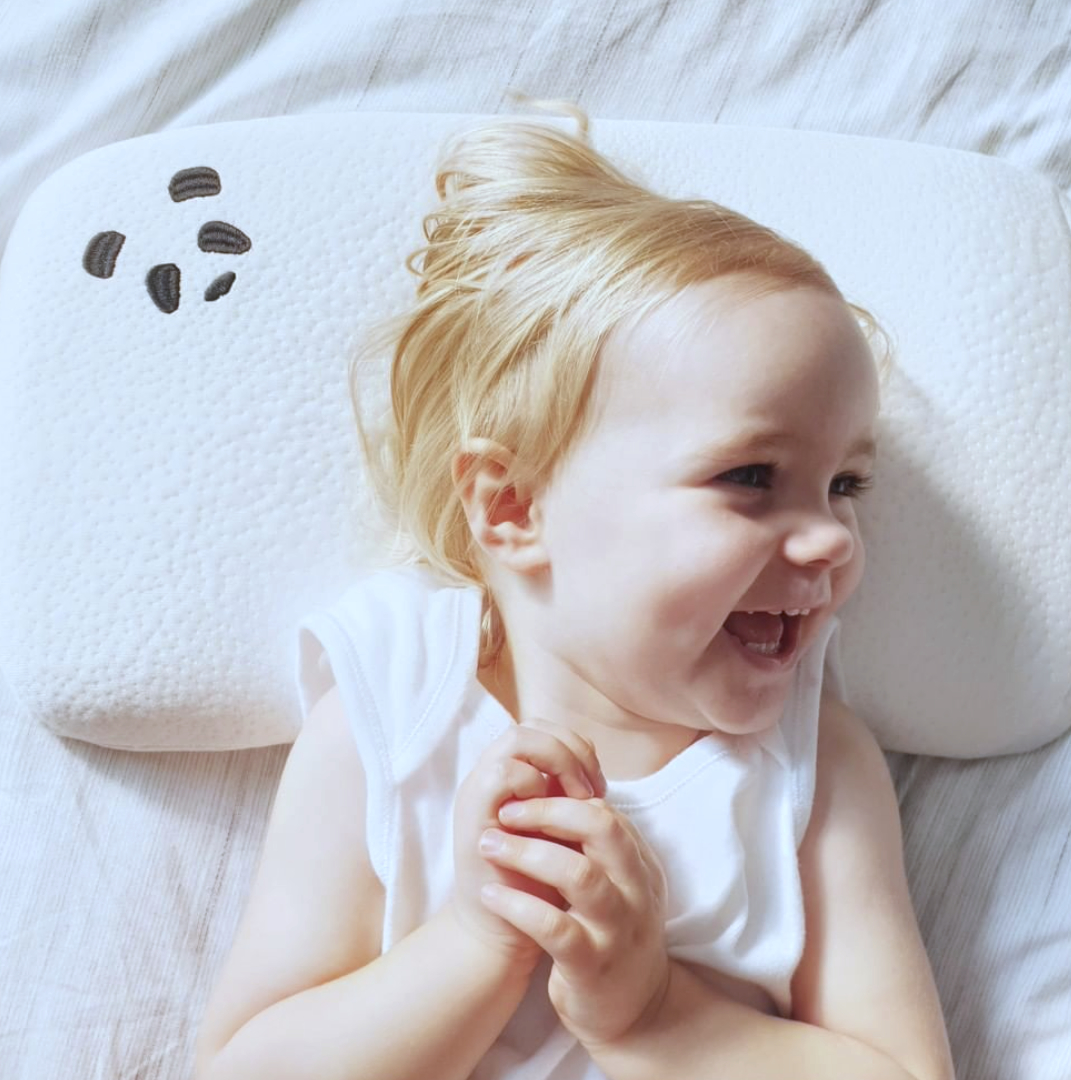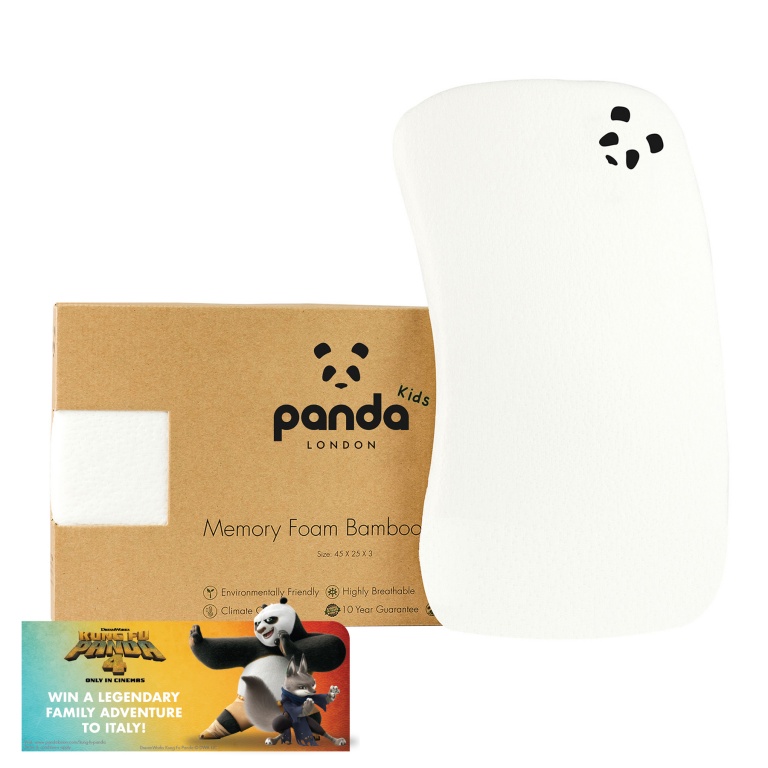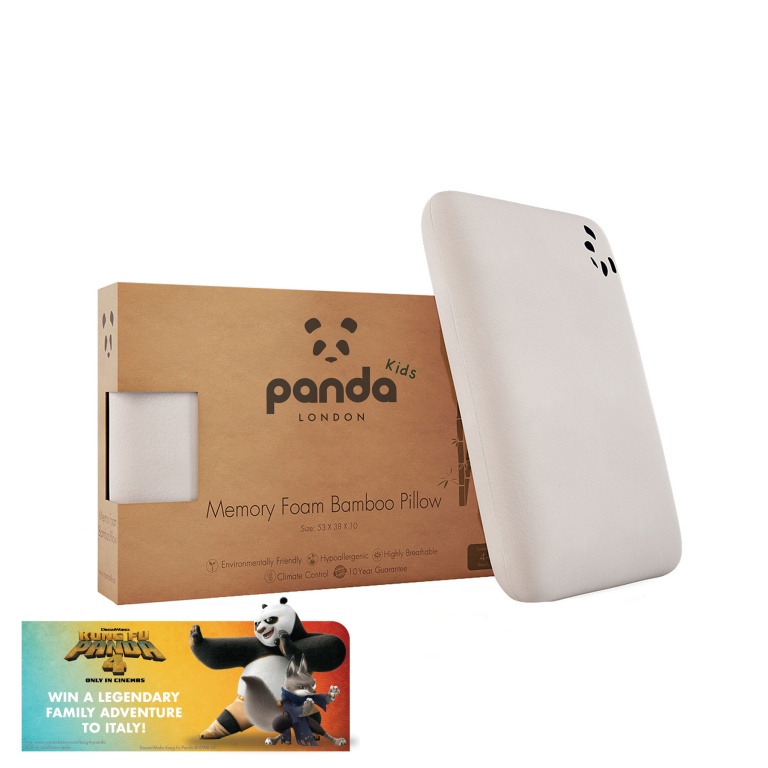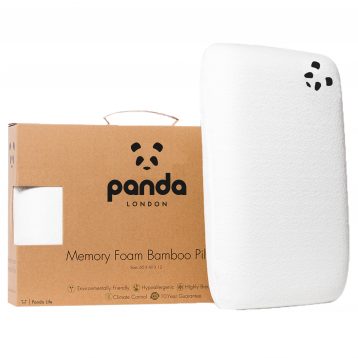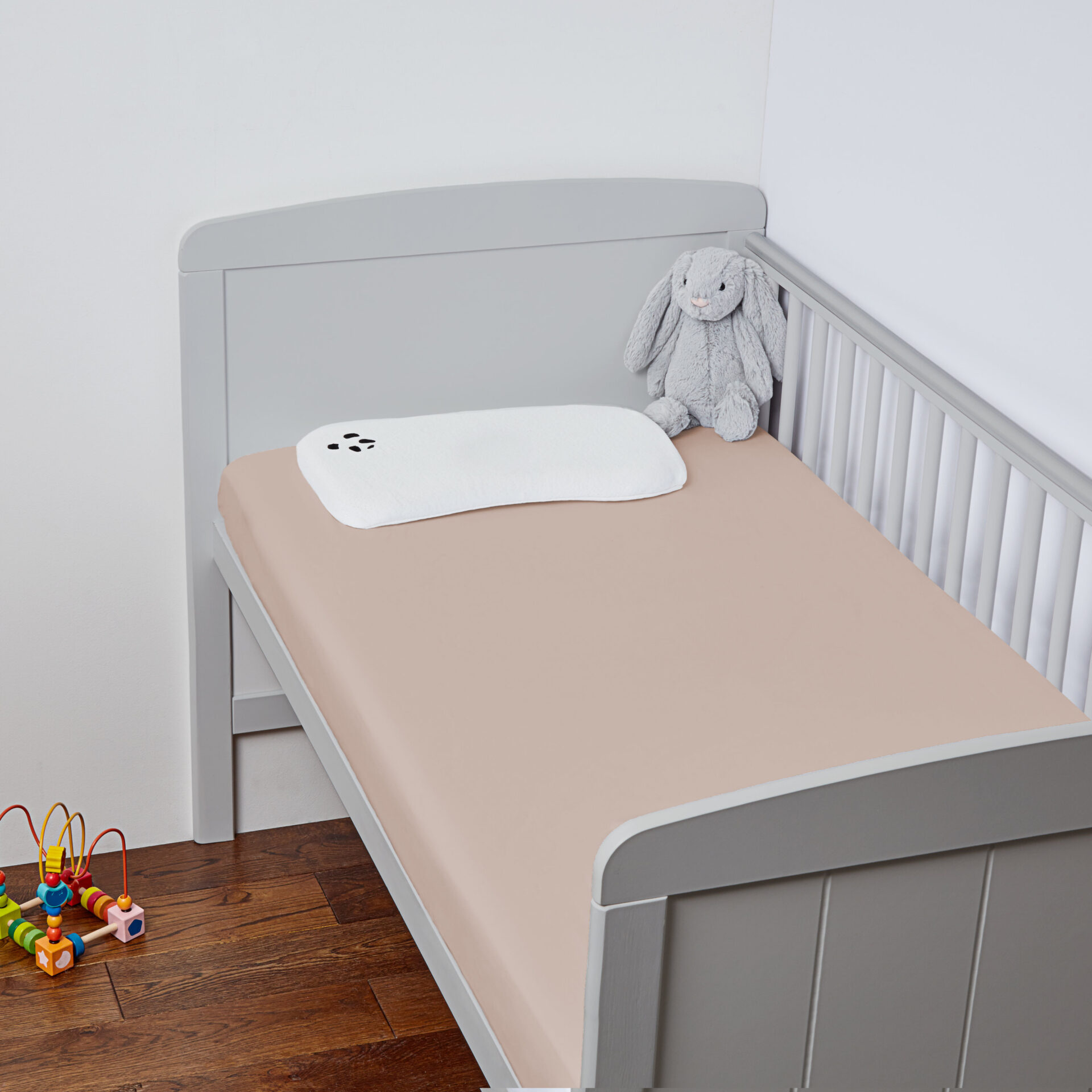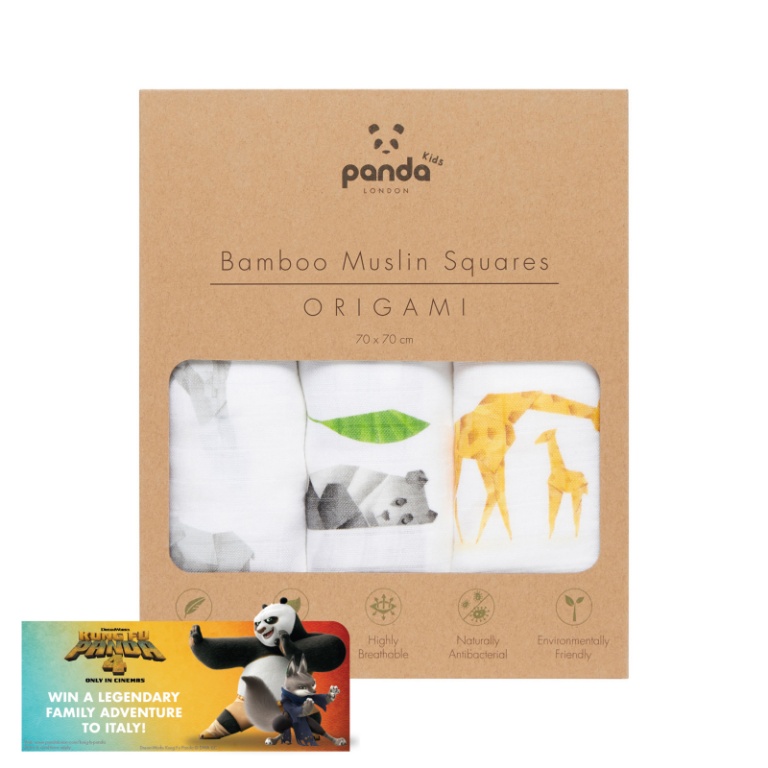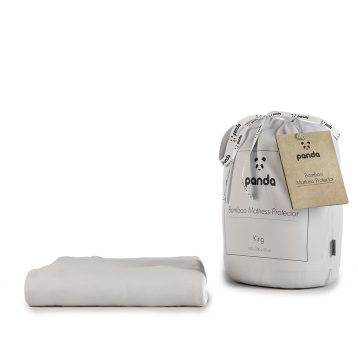As we ease into September, change is in the air. With shorter days, darker mornings (and lots more snuggly nights in), it’s a great time to focus on getting little ones into a good sleep routine and ensuring they get all the right nutrients for a healthy season. Our home renovation expert and Mum of two Emily Smythe talks to us about bedtime routines, nutritious snacks and simple ways to encourage your little heroes to be eco-friendly.

1) As a mum of two under three (rockstar) how important do you feel good nutrition and sleep are for little ones’ well-being?
Good nutrition and sleep are crucial for all of us, especially children. If they don’t get enough good quality sleep, not only can they be more irritable, it can affect their immune systems – particularly at this time of year. I always ensure Ella and Bradley get plenty of sleep; having bedding they love can help set up a good relationship with bedtime. They love getting snuggled into their Panda London duvet and pillows.
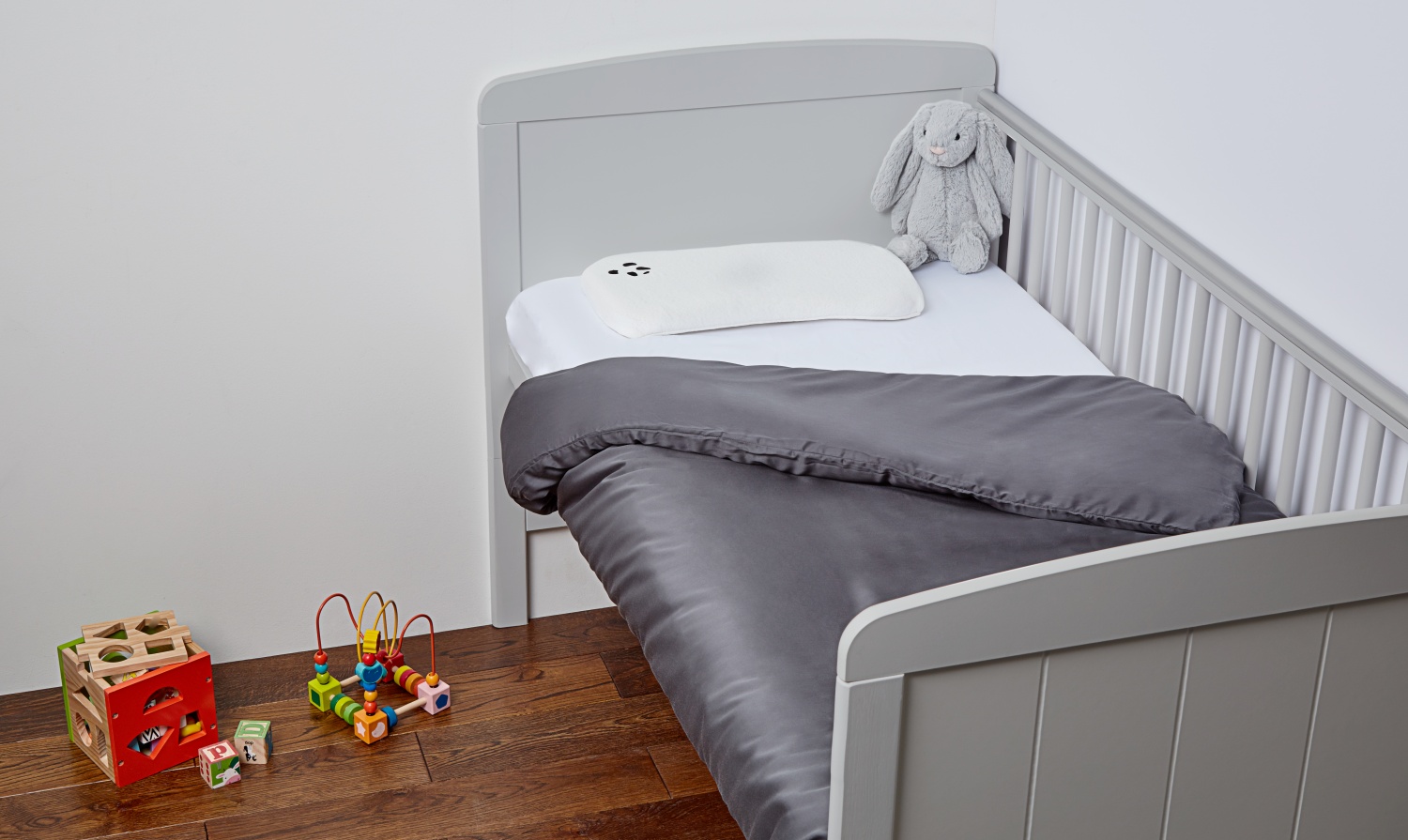
2) How do you incorporate a healthy diet into their everyday routine?
Every day is different though I try my best to be prepared. I do make sure as a family we have a balanced diet. I ensure the children have enough protein, fruit, vegetables, carbohydrates and fats. To keep their energy levels up I make sure I have lots of healthy snacks prepped throughout the day – they love simple things like breadsticks and hummus, fruit, frozen yoghurt bites and rice cakes. If we are out and about they are easy to pop in my carry bag so when they say “I’m hungry”, I’m ready.
3) Do you feel having the right nutrition can help them sleep better?
Absolutely! I find when they do have a sugary treat whether it’s biscuits, chocolate or ice cream, they are very hyper(active) for a long time. I wouldn’t ever give them these before bed because it would make it very hard to get them to settle, so I plan any treats for earlier on in the day. Setting meal times and keeping them consistent really helps to balance their energy levels throughout the day and get them into a good routine.
4) What are the best bedtime snacks?
We don’t really have bedtime snacks, but both children still love a beaker of full fat milk. This doesn’t interrupt their routines and can help make them feel sleepy before I settle them into bed.
5) What do you think a good bedtime/morning routine looks like?
I think it’s key to keep it consistent. For us, we have dinner, and then I let them enjoy some TV time all together, which we all look forward to. Then we head upstairs and have bathtime, they love getting cosy in their Panda hooded towels after making a splash, which helps keep bath time fun and cosy. Then we play, read, and snuggle up in bed. Ella sometimes has her Yoto Story Player on, too, which she loves.
In the morning I think it’s important that children wake up naturally when they’re ready, as this shows they’ve had enough sleep. When they are awake we head downstairs for a play, have a good breakfast, get dressed and ready for our day. Bradley has been known to wake up and wake us up at 5am – on those mornings we watch a little bit of TV until my brain is ready to function.
6) Children can be very sensitive when it comes to sleep. What do you look for when it comes to kids’ bedding?
I think with their skin being so sensitive, it’s important to ensure our children have hypoallergenic bedding that feels soft and gentle – it really helps them stay comfortable throughout the night. Also that it’s breathable and thermoregulating, to keep them at just the right temperature. That’s one of the reasons I love bamboo bedding. Also I make sure I do not use any harmful chemicals when I wash their bedding.
7) How important is sustainability to you when choosing products for your little ones?
Very important. We want to have good quality products that stand the test of time, whilst being kind for the environment. We always look for brands that do their bit when it comes to taking care of our planet; this makes shopping for quality products something you can feel good about.
8) What are some of the ways we can encourage little ones to be eco-friendly from a young age?
There are simple things you can do that make it fun and rewarding. Ella is already learning about recycling which I am very proud of. We also discuss things that are good for the planet and what isn’t as good; it’s amazing how quickly they learn (and grow).
Thanks, Emily, it certainly is – it must be all that sleep and those healthy snacks!
Although all children are wonderfully different, it’s clear that setting them up with a good sleeping routine and a balanced diet can work wonders. By choosing good quality bedding, watching their sugar intake and keeping bedtime consistent you can set your little heroes up for an Autumn of fun, learning and of course… plenty of snuggles.
Have a healthy and cosy season.
The post Autumn Special: Sleeping Routine and Nutrition Tips for Little Ones first appeared on Panda.
]]>When it comes to ensuring your child’s sleep quality and posture, choosing the right pillow is paramount. An appropriate pillow can provide the necessary support, comfort, and alignment for your child’s growing body. There are various factors to consider when selecting a pillow for your child, including their sleep needs and pillow considerations. You’ll also need to know the signs of an unsuitable pillow and some tips for finding the perfect fit – which you’ll find in this kid’s pillow buying guide.
Understanding child sleep needs
Children have unique sleep needs that differ from adults. Their growing bodies require proper support to develop healthy sleep habits and maintain good posture – they also tend to need a bit more sleep than adults do to encourage growth and development. There are many children’s sleep essentials, and choosing the right pillow is just one of them. A suitable pillow can help align the head, neck, and spine, ensuring your child’s restful and rejuvenating sleep. They’ll wake up feeling refreshed and ready to take on the day ahead with the right kids’ pillow comfort and support.
What are some factors to consider when choosing a pillow?
Several important factors come into play when choosing the right pillow for your child. It’s essential to consider the following factors when looking for a pillow that suits your child’s individual needs…
Age and developmental stage
There are different pillow requirements for children of different ages – toddlers should have a much flatter pillow than pre-teens, for example, to avoid straining little necks and spines that are still growing.
Pillow material and fillings
One of the most common pillow fillings is down, but this can be itchy and irritating on little ones’ skin – latex is another popular choice, but this is often synthetic and bad for the planet. Organic latex, however, is a good option for little ones as it is both soft and cooling. Memory foam is a brilliant filling in that the shape adapts to support your child the way they need. If you are using a memory foam pillow for your little one, it needs to have cooling properties, too, to counteract the natural heat retention of this material.
Pillow size and loft
This refers to the height of the pillow; as mentioned above, younger children need a lower pillow loft so their neck is supported without being strained in an unnatural way. And because children’s shoulders aren’t particularly wide, pillow recommendations for young sleepers say that a lower loft works really well.
Allergies and hypoallergenic options
A pillow can be a really personal thing; for example, if your child has allergies, you must ensure that the pillow you choose is free from the allergen(s) that impact their health. Opting for a hypoallergenic pillow means you should cover most bases – your child’s pillow selection is important for allergies.
Pillow cover and maintenance
As a parent, you’ll know the mess kids can make! Take some stress out of your life by opting for a pillow with an easily removable and washable cover and one made from a durable fabric like bamboo.
What are some signs of an unsuitable pillow?
Recognising the signs of an unsuitable pillow ensures your child’s nighttime comfort and overall well-being. If your child often wakes up with a stiff neck, experiences discomfort, or has difficulty falling asleep, these might be signs that their current pillow is not providing adequate support. The same goes for waking up itchy or sneezing – this is a sign that your kid’s pillow could be causing an allergic reaction of some sort. Keep this in mind, and if you notice any of these signs, consider swapping out their pillow for something more suitable.
Pillow selection tips for kids
To find the perfect pillow for your child, consider the following tips:
Involve your child in the process
Children love to be involved in things; it is their pillow, after all! Ask them if they would like their current pillow to be softer or harder, for example, and go from there. Allow them to express their opinion on a potential new pillow and discuss their sleep preferences with them – this is one of the best pillow considerations for children.
Seeking professional advice
Look at what the experts say regarding the best pillows on the market, which materials to choose, and what type of pillow a child should have at the age you’re shopping for. This will give you peace of mind that you’re making the right choice regarding child-friendly pillow options!
Trying different pillows
When it comes to picking the right pillow for your kid, it can come down to trial and error. By letting your little one try out some different pillow types, even just giving them a squish, they’ll be able to form an opinion on what they like, and you’ll be able to see what actually works for them. Look for pillows with a free trial period; your child can get a feel for what they want to sleep on.
What are some pillow safety considerations
When choosing the best pillow for children, you need to consider their safety above all things. A pillow might feel super comfortable, but it might be too soft – this comes with the risk of their face sinking into the material during the night. Additionally, memory foam without any cooling properties might cause your child to overheat. Ensure the pillow you choose is certified to the correct pillow standards in your location to keep your little one sleeping safe and sound.
Choosing your child’s pillow
Using these tips, you’ll be able to find the best pillow available for your child and any individual needs they may have. Think about height and density, as well as hypoallergenic properties and safety considerations, and be sure to involve your child in the process of choosing their brand-new pillow. A proper pillow will help them sleep better and support their physical development – all of this is incredibly important!
FAQ
At what age should I consider getting a pillow for my child?
It’s generally safe to introduce a pillow to your child’s sleep environment around the age of 2 or when they transition from a crib to a toddler bed. However, always consult with your child’s paediatrician for personalized advice.
What type of pillow is best for young children?
For young children, consider a small, soft, and hypoallergenic pillow. Look for one that provides gentle support and is free from potential allergens.
Should I choose a pillow with a specific fill material?
Pillow-fill materials like bamboo or down alternatives are good choices for children due to their hypoallergenic properties. Make sure the pillow is easy to clean.
Are there any pillow safety guidelines to follow?
Yes, safety is paramount. Avoid pillows with loose parts, strings, or buttons that can pose choking hazards. Always keep pillows and bedding away from a baby’s face during sleep.
Can my child use a regular adult-sized pillow?
While it’s not recommended for very young children, older kids (around 8-10 years old) can transition to a standard adult-sized pillow if it provides proper support.
How can I maintain the cleanliness of my child's pillow?
To maintain hygiene, use a pillow protector and a pillowcase that are easy to remove and wash. Follow the care instructions on the pillow label.
What signs indicate that my child needs a different pillow?
Watch for signs of discomfort, allergies, or poor sleep quality. If your child experiences these issues, it may be time to consider a different pillow.
Explore our range:
-
Baby Memory Foam Bamboo Pillow
£24.95 -
Hybrid Bamboo Pillow
£89.95 -
Kids Memory Foam Bamboo Pillow
£31.95 – £34.95 -
Memory Foam Bamboo Pillow
£44.95
The post How to Choose the Right Pillow for Your Child first appeared on Panda.
]]>Understanding the Importance of Sleep for Children’s Growth and Development
Sleep plays a crucial role in promoting children’s growth, development, and overall well-being. Parents must understand the varying kids’ sleep needs by age and provide a nurturing sleep environment for their child. The older your little one gets, the more their sleep pattern will change – as well as that, various factors can affect children’s sleep guidelines. We also have some practical tips for encouraging healthy sleep habits, which are vital from day one.
Newborns to infants (0-3 months)
During the first few months of life, newborns and infants require the most sleep. They typically sleep for 14-17 hours a day, often in shorter periods spread right throughout the day and night. Their sleep is characterised by frequent awakenings for feeding, changing, and comfort. At this age, night-time sleep isn’t too different from naps and daytime sleep – it all blends together when they’re a newborn!
Infants to toddlers (4-12 months)
As infants grow, their sleep patterns begin to shift, and they tend to settle into more regular nap and night-time sleep routines – hopefully, at least! Babies between 4-12 months generally require 12-16 hours of sleep, including multiple daytime naps. Night-time sleeping durations generally increase, and some infants may start sleeping for longer stretches at night with shorter naps in the day. They do still require those daytime snoozes and will usually feed in between.
This age really is the perfect time to start establishing a bedtime routine in the run-up to night-time sleep: bath, story, cuddle and then into their cot. The earlier you do this, the easier it should be as you are helping their brain get into the habit of knowing when it’s time for bed. It’s something that will stand them in good stead for the rest of their childhood, showing that sleep is a really important part of life.
Toddlers to preschoolers (1-3 years)
In the toddler to preschool stage, the recommended sleep for kids is around 11-14 hours each day, including naps. At this age, sleep patterns start to become more consolidated, with most children transitioning to a single nap during the day. There may be some challenges with sleep at this age, especially if they are in nursery and their nap time has to change – it is important to help your child adapt to these changes. It is also around age two that children might start to experience nightmares for the first time, which can be really scary; their imagination is starting to run wild now. Helping your child through this will encourage them to have a healthy relationship with sleep.
Preschoolers to school-age children (3-6 years)
Sleep duration for youngsters of this age is approximately 10-13 hours of sleep per night. While some children may still benefit from a daytime nap if possible, it is at this age when many little ones will gradually phase out daytime sleep altogether. Creating a calming bedtime routine and ensuring a conducive sleep environment can help facilitate quality sleep during this stage, which is very necessary as they start school and need to concentrate. The school also has many germs, and sleep boosts their immune system! Keep going with that bedtime routine, allowing time for homework, a bath or shower and playtime, and sticking to a set bedtime.
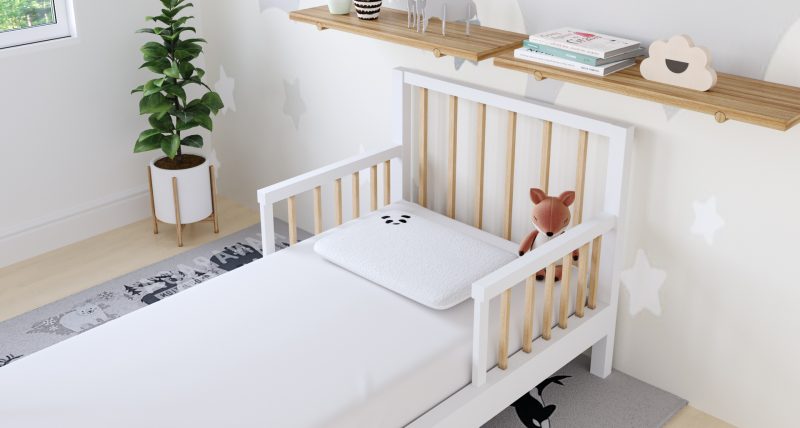
School-age children (6-12 years)
School-age children should aim for 9-12 hours of sleep to support their growth, cognitive development, and academic performance. This is adequate sleep for children of this age. However, as children become involved in extracurricular activities, it might be harder to ensure they get enough sleep – this is why it is so important to ensure their bedroom is a calm and inviting place that promotes sleep! That way, they will fall asleep quickly if they’re not always getting to bed as early as they should be. Kids bamboo bedding really helps with keeping them comfortable at night, a key factor in ensuring a good night’s sleep. Children’s sleep duration is definitely improved when they feel comfy at night.
Which factors affect kids’ sleep?
As we know, there are many different factors which can impact your children’s sleep patterns. Screen time is a huge one, and while screens do have their place in a child’s life, they should be monitored – and restricted in the run-up to bedtime! Screen time at night can keep your child awake as it interrupts cortisol (the sleepy hormone) production. Check that their diet isn’t influencing their sleep quality; keep sugar to a minimum, especially before bedtime. Their bedroom should be somewhere that promotes a sense of calm and helps them drift off; it can be difficult to keep toys and other distractions out of the bedroom, especially if you live in a flat or small house. But if you are clever, this helps them separate sleep and play.
Recognising sleep deprivation in children
Sleep deprivation can have long-term effects on your child’s health and happiness. It is linked to many chronic health problems, so you should do everything you can to avoid your child suffering from a lack of sleep. Insufficient sleep can increase temper tantrums or mood swings, needing more naps when they’ve outgrown that stage, hyperactivity and oversensitivity. This is definitely something worth keeping an eye on, as kids sleep requirements do change over time.
What are some practical tips for encouraging healthy sleep habits?
First of all, a consistent sleep schedule is a must. You will hear this much as a parent, but its importance cannot be overstated – set a bedtime and establish a routine that you stick to each night. They should have had a bath and have their pyjamas on at a set time, followed by a story and some cuddles before bed; obviously, this will change as they get older, but you should always stress the importance of a routine, whatever it consists of.
Encourage your children to wind down before bed, no matter what age. Once they outgrow the need for a story on your lap, suggest independent reading or something else that relaxes them: yoga, puzzles, pampering, etc. It is also important for a parent to have some strategies at hand for addressing bedtime resistance. Most children go through a phase of refusing to go to bed, but you need to be open and honest with them about why sleep is so important. You should also model healthy sleep by following your own set bedtime routine and not staying up too late. Other strategies can include rewarding them for good bedtime behaviour and allowing them to be more involved in their sleep routine.
Navigating sleep challenges
Sleep and children often don’t go together – there will be challenges along the way. These might include nightmares (or even night terrors) and sleepwalking. Try to address these early on, and be receptive to what your children are experiencing or worrying about. Nightmares and sleepwalking can be linked to stress, so be sure to sit down with them and ask what’s going on. You will likely also come across bedwetting; most children go through this, and it is important not to shame your little one for this. Instead, talk to them about it and explain the importance of going to the toilet before bed, getting up at night if they need to use it again, and letting somebody know if this has happened so they aren’t uncomfortable all night.
How much sleep do kids need?
How many hours of sleep for kids changes depending on how old they are – it is really important, however, that you stick to how much sleep is necessary for their age. It is one of the most vital parts of life as it helps them grow and develop, boosts their immune system, and allows them to focus during the day. You should address your child’s unique needs when it comes to sleep; be intuitive in terms of their naps, support them through nightmares, and ensure they are comfortable every night. With these sleep recommendations for children, hopefully, you’ll all be sleeping through in no time…
FAQ
What are the signs that my child may not be getting enough sleep?
Signs of insufficient sleep in kids may include excessive daytime sleepiness, difficulty waking up in the morning, moodiness, difficulty concentrating, and decreased academic performance.
How does inadequate sleep affect my child's health?
Insufficient sleep can impact your child’s physical health, cognitive function, mood, and overall well-being. It may lead to issues like obesity, a weakened immune system, and difficulties in school.
How can I help my child establish healthy sleep habits?
Creating a consistent sleep routine, maintaining a comfortable sleep environment, limiting screen time before bedtime, and encouraging daily physical activity can all contribute to healthy sleep habits.
Are naps important for children's sleep?
Yes, naps benefit younger children, helping them catch up on missed sleep and promoting overall well-being. However, naps should be appropriately timed to avoid interfering with nighttime sleep.
Can my child's sleep needs change as they grow?
Yes, children’s sleep needs vary based on age and developmental stage. It’s important to monitor their sleep patterns and adjust their schedules accordingly.
How can I create a bedtime routine that supports my child's sleep needs?
Establishing a consistent and calming bedtime routine can signal to your child’s body that it’s time to wind down. Activities like reading, dimming lights, and gentle music can help prepare them for sleep.
Explore our range:
-
Baby Bamboo Muslins
£24.00 – £40.00 -
Baby Memory Foam Bamboo Pillow
£24.95 -
Bamboo Mattress Protector
£19.95 – £50.00 -
Kids 100% Bamboo Bedding
£32.95 – £40.00
The post How Much Sleep Do Kids Need? first appeared on Panda.
]]>As parents, ensuring babies and toddlers’ healthy growth and development is a top priority. Choosing gentle, breathable fabrics for their skin is one of the best things you can do to protect against allergies and irritation, especially at bedtime. Read on to discover why bamboo makes a great choice to keep them cosy and sleeping comfortably.
What is bamboo?
Mums and Dads deserve a medal. Keeping little ones protected from the tops of their tiny heads to cute little toes is exhausting. The good news is bamboo sleep products can help. New to bamboo? The wonder plant grows in tropical forests, predominantly in South East Asia relying on little more than sunshine and water to grow. The versatile plant is being used to produce many of the products we use in our homes and has been hailed as the trending fabric of the 21st Century. And it’s no wonder. It hosts many amazing benefits, some of which make it perfect for creating snuggly, soft and skin-friendly sleep products for kids.
Why should children sleep on bamboo?
When it comes to bedtime, keeping children’s skin comfortable will help them drift off sooner and prevent waking in the night. Here are some common questions parents have about why children should sleep on bamboo.
Is bamboo hypoallergenic?
Children’s skin can be very delicate, when it comes to their bedding, duvet, and clothes you want to make sure they are made from a fabric that will be kind and gentle. Bamboo is naturally hypoallergenic which plays a vital role in keeping sensitive kids’ skin healthy and comfortable. Irritation can keep them up at night and prevent them from going to sleep, the natural fabric will soothe skin so they drift off wrapped in comfort.
Does bamboo keep kids cool at night?
Another reason parents love this bedding is the fabric is naturally thermoregulating. It will keep kids cool in the hot summer nights and cosy in the winter, reacting intuitively to their body temperature so they stay at ‘just right’ degrees. Overheating can cause a lot of tears and tantrums, leading to not-so-bright mornings. The fabric is beautifully breathable keeping them sleeping soundly all night through.
Are bamboo products non-toxic and safe?
As the plant relies on little more than sunshine and water to grow, the fabric produced is free from nasty pesticides. Provided the production process is chemical-free, the resulting fabric is non-toxic, safe and organic. Look for brands that are OEKO-TEX 100 certified for reassurance they are premium quality, as natural as possible, and eco-friendly. Our production process is eco-friendly from forest to the front door and our award-winning products are certified to the highest standards. We pride ourselves on our commitment to your comfort, well-being, and taking care of the planet.

Does bamboo absorb heat?
The soft, smooth fabric is naturally moisture-wicking, it wicks away heat and moisture to keep children’s skin cool and comfortable. The fabric is also antibacterial and odour-resistant keeping bedtime ultra-fresh. This helps keep little one’s skin healthy, fending off any bacteria and smells that can lead to irritation. They will be comfy and snug from the bedtime story till morning.
What sleep products are made from bamboo?
You can find an abundance of bamboo sleep products to keep your kids all wrapped up and resting in natural comfort. From supportive, breathable pillows to the cosiest duvets.
Here are some of parents’ top picks.
Kids’ Memory Foam Pillows
Bamboo kid’s pillows are a bedtime favourite for many reasons. Not only does third-generation memory foam keep little spines and necks in perfect alignment, but the breathable cover also prevents overheating. It is removable, washable, and gently protects against irritation for healthy, refreshing sleep.
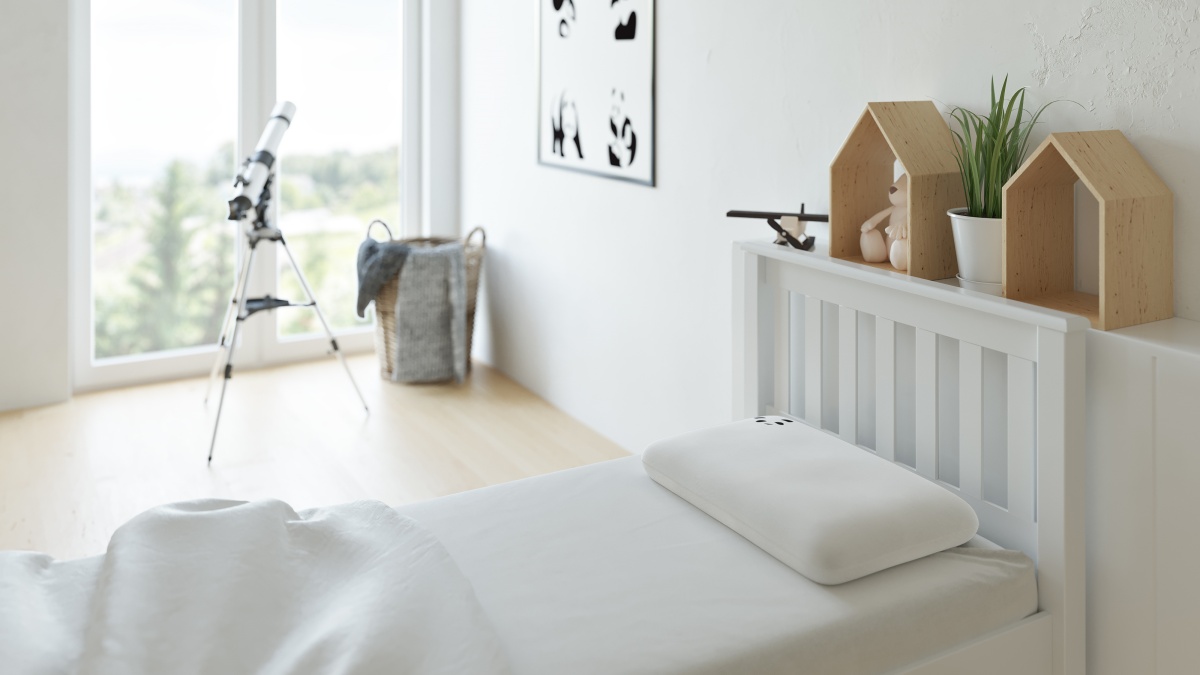
Kids Duvets
A kid’s bamboo duvet is the perfect way to keep children wrapped up and cosy all year round. The thermoregulating fabric can be used for the filling and the cover, feeling light-as-air and soft and fluffy as a cloud for the dreamiest sleep.
Bedding
Choosing bamboo bedding for kids is ideal for their skin. The breathable sheets will feel soft and smooth while keeping them cool and comfortable throughout the night. There will be no need to change their bedding in spring, summer, autumn or winter. Bamboo bedding is naturally thermoregulating, no matter the season, they will be sleeping soundly and ready for happy mornings.
Baby Muslins
Baby muslins are every parent’s best friend, the larger swaddles make the perfect comforters and blankets to keep them wrapped up and snug at bedtime. The fabric is anti-bacterial, super absorbent, and easy to wash (even getting softer with every wash Opting for an eco-friendly detergent and drying naturally is the best way to take care of your muslins and the planet.
Final Thoughts
You can rest assured, Panda’s kids sleep products will keep bedtime healthy and comfy which can help them settle into a more consistent sleeping pattern. Hoorah!
Good sleep is magic for little ones and parents. However, one of the biggest challenges for new mums and dads is keeping them sleeping throughout the night. Looking for ways to optimise their rest with safe products that are skin-friendly can help. The challenge of getting children into a consistent sleeping routine can take its toll. Over time broken sleep can cause stress and even impact your immune system. Go easy on yourself and try and take naps when you can to stay energised.
With a good night’s kip you and your little cuties will be ready for more fun and cuddles.
Sweet Dreams
The post Why are Bamboo Sleep Products Great for Kids? first appeared on Panda.
]]>


